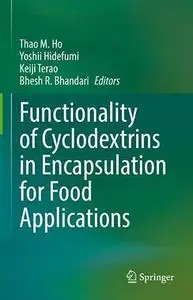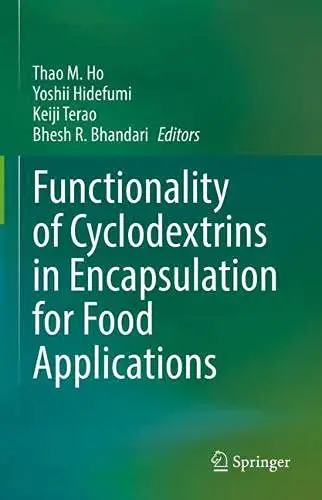Functionality of Cyclodextrins in Encapsulation for Food Applications by Thao M. Ho
English | PDF,EPUB | 2021 | 343 Pages | ISBN : 3030800555 | 43 MB
Cyclodextrins (CD) are cyclic oligosaccharides containing 6, 7 or 8 glucose units (α, β or γ-CD, respectively) in a truncated molecular shape. Their cyclic molecular structure contains a hydrophilic surface and a hydrophobic cavity at the center that can interact (host) with external hydrophobic compounds (guest molecules).
Cyclodextrins have been categorized as Generally Recognized As Safe (GRAS) in the USA, “natural products” in Japan, and as “novel food” in Australia, New Zealand and EU countries. They are therefore widely used in food production to encapsulate hydrophobic compounds, including solid, liquid and gas molecules, in order to solubilize, stabilize or control the release rate of these components. To date, there has been no comprehensive review of the very large number of studies performed on encapsulation using cyclodextrin powders for food applications in recent years.
This text fills that gap for academics in the encapsulation field and for industry professionals who want to gain a solid understanding of encapsulation functionality of cyclodextrin powders. The book consists of 16 chapters in which chapter 1 introduces cyclodextrin properties and its applications in food processing, and chapters 2-16 explore applications of cyclodextrin in encapsulation for many guest compounds. These compounds include gases, flavors, colors, pigments, polyphenols (plant bioactive compounds), essential oils, lipids (cholesterol and polyunsaturated fatty acids), vitamins, fruit ripening controlling compounds, and antifungal and antimicrobial compounds. These chapters also discuss functionalities of cyclodextrin in packaging, masking off-flavor and off-taste, and as dietary fiber.
Covering a broad range of cyclodextrin applications and suitable for both newcomers to encapsulation technology and those with experience, Functionality of Cyclodextrins in Encapsulation for Food Applications is a unique and essential reference on this increasingly important topic.



